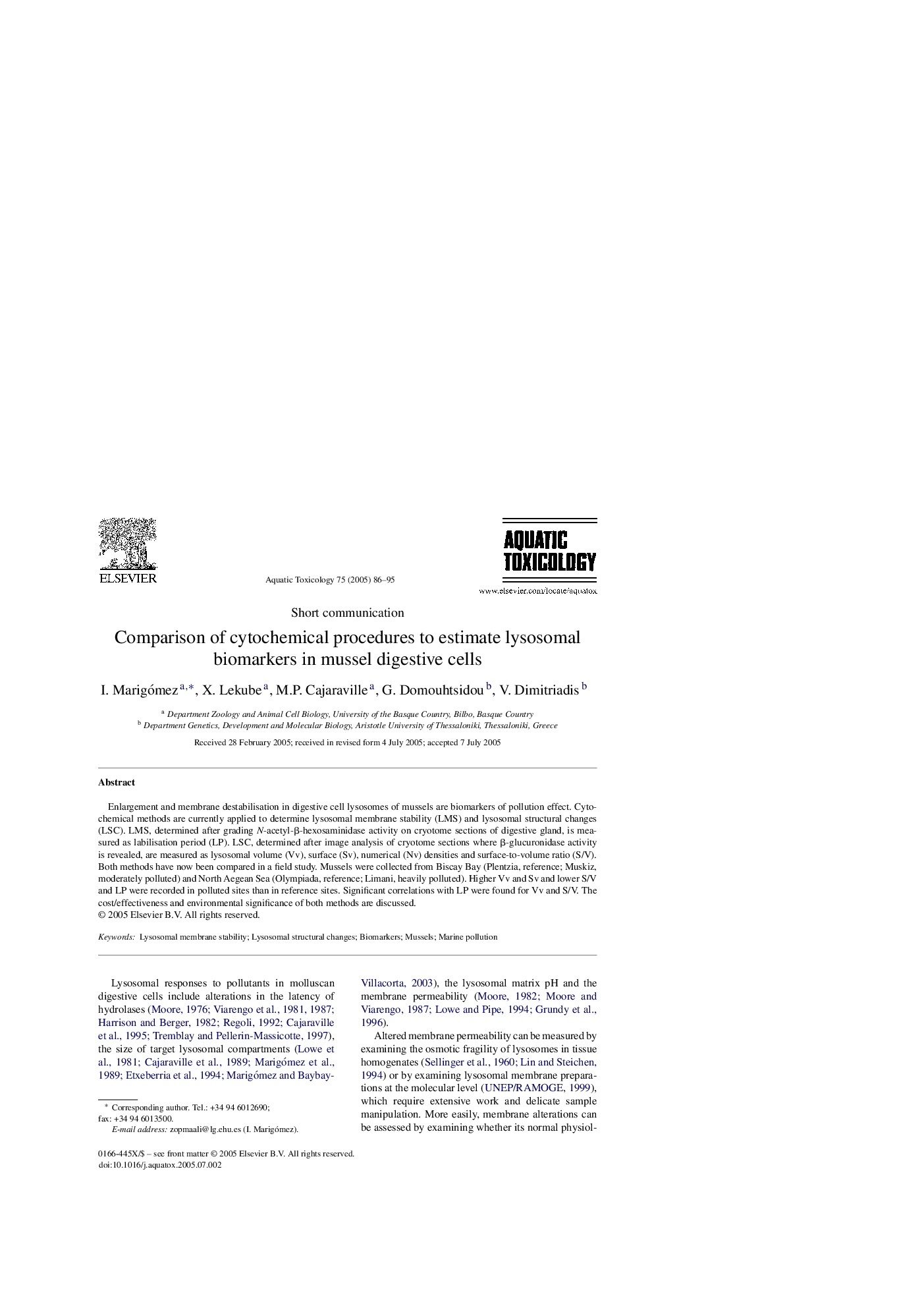| Article ID | Journal | Published Year | Pages | File Type |
|---|---|---|---|---|
| 9478263 | Aquatic Toxicology | 2005 | 10 Pages |
Abstract
Enlargement and membrane destabilisation in digestive cell lysosomes of mussels are biomarkers of pollution effect. Cytochemical methods are currently applied to determine lysosomal membrane stability (LMS) and lysosomal structural changes (LSC). LMS, determined after grading N-acetyl-β-hexosaminidase activity on cryotome sections of digestive gland, is measured as labilisation period (LP). LSC, determined after image analysis of cryotome sections where β-glucuronidase activity is revealed, are measured as lysosomal volume (Vv), surface (Sv), numerical (Nv) densities and surface-to-volume ratio (S/V). Both methods have now been compared in a field study. Mussels were collected from Biscay Bay (Plentzia, reference; Muskiz, moderately polluted) and North Aegean Sea (Olympiada, reference; Limani, heavily polluted). Higher Vv and Sv and lower S/V and LP were recorded in polluted sites than in reference sites. Significant correlations with LP were found for Vv and S/V. The cost/effectiveness and environmental significance of both methods are discussed.
Related Topics
Life Sciences
Agricultural and Biological Sciences
Aquatic Science
Authors
I. Marigómez, X. Lekube, M.P. Cajaraville, G. Domouhtsidou, V. Dimitriadis,
